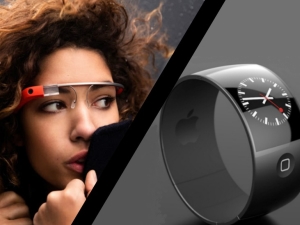
Wearables in the IT Workplace
By: Chelsea Babin
Everyone’s buzzing about wearable technology in 2014. Smart watches, Google Glass and FitBits lead a lot of tech discussions. Though no one is entirely sure if they’ll have widespread popularity, a few workforces such as firefighters, construction workers and police officers are considering using them in the workplace. This begs the question—why aren’t IT departments considering the same thing? After all, IT departments are often synonymous with innovative business practices that utilize the latest technologies. So why not wearables?
Google Glass provides a hands-free recording feature that would help managers monitor their employee’s progress and efficiency. This could prove extremely useful during new employee’s first few days. The manager could quickly identify any issues and correct behavior before it becomes a pattern. Similarly employees would have easy access to video based training materials that they could reference as they work. However, with more established members of your IT team this might not be the best approach. For one thing it reduces workplace autonomy and definitely adds an Orwellian spin on the workplace that may scare your top technical talent away.
The recording feature of Google Glass makes it convenient to record the interview process as well, including white board coding interviews, so that you can refer to them later. Potentially, you could compare these recordings side by side after the interviews are completed and get a better understanding of how the candidates stack up next to each other. If you try this approach make sure to let the candidates know ahead of time that you’ll be recording so they aren’t surprised when they walk in and see you wearing smart glasses.
Similarly, if you like using the recording feature provided by most smart glasses, have your employees wear them during training meetings or when you deliver instructions. If you work in a SCRUM style environment encourage them to wear the glasses during morning meetings as well. This will allow your employees to have a word for word replay without frantically taking notes or asking you to repeat yourself later. It will keep them more attentive while you speak and save you from giving instructions or answering questions more than once.
If you’re already having issues with employees being distracted by their technology, wearables may take that to a whole new level. Constant access is not always a good thing. However, if several of your employees are frequently on the go, providing them with smart watches to store work related information might help to separate the two worlds and keep them off of their other tempting smart devices.
Access to information is the key beneficial factor of wearables. However, wearable health accessories provide benefits better left to personal time. That just leaves wearables like glasses and watches that come with their own sets of issues, like data security. Are you ready to purchase expensive equipment for your employees that may put your company’s sensitive data, as well as their own personal data, at risk?
For now the wearables buzz is surrounding physically demanding jobs and personal time. The development of wearables will keep many in the IT industry busy for years to come but most aren’t considered useful in an information technology workplace. Recording with smart glasses will streamline many of your day-to-day activities, but their current high-end price tags may not be economical for every company. With further development we’ll be able to understand whether or not they’re only suited for niche markets. Someday, new features could make them universally useful in IT departments. For now their limited benefits yet undeniable cool tech factor won’t earn them a spot as a standard technology, but keep an eye out! With further updates and innovations wearables may soon become essentials for your IT staff.
